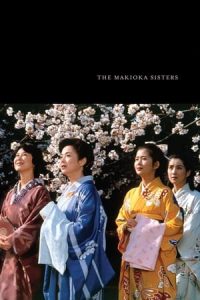- Source: Broadway-Spring Arcade
Broadway-Spring Arcade, also known as Broadway Arcade, Spring Arcade, Arcade Building, and Mercantile Arcade Building, refers to three adjoining buildings located at 540 S. Broadway / 541 S. Spring Street. The buildings face both Broadway and Spring Street, connecting the Broadway Theater and Spring Street Financial districts midway between Fifth and Sixth streets in the historic core of downtown Los Angeles.
History
= Precursors
=In 1883, the Los Angeles school board purchased land fronting both Broadway and Spring Street, mid-block between Fifth and Sixth streets, for $12,500 ($408,750 in 2023). Spring Street School was then built on the land.
In 1904, the school board put the land up for lease but retained the material in the schoolhouse. C. Westley Roberts secured a ten-year lease on the land and bought the schoolhouse material, which he then demolished. Mercantile Place opened on the property the following year, and during its existence, it was home to Citron-Favell's Women's Wardrobe, Yamato Japanese art bazaar, Pe-co dance academy, and a Woodmen of the World temple, amongst others.
Around 1914, school board members realized their Broadway-Spring property value had increased from $400,000 in 1904 ($13.6 million in 2023) to $1 million ($30.4 million in 2023), meaning Roberts's rental charge was only 2.5% a year on the valuation. As a result, in February 1914, the board signed a new lease with the Mercantile Improvement Association for $3,500 a month, and they held a referendum to decide the future of the property. The vote totals of the referendum were: 2,003 to lease the property for fifty years, 1,478 to sell the property, and 931 to do neither of these options.
The school board ultimately sold the property to Adolph Ramish in 1919 for $1.155 million ($20.3 million in 2023). Ramish then resold the property to a group of San Francisco businessmen headed by A.C. Blumenthal for between $1.5 million ($26.4 million in 2023) and $2.5 million ($43.9 million in 2023), in what was described as "probably the largest cash realty transaction in the history of Los Angeles."
Mercantile Place was demolished in 1923, when its title was passed to the Mercantile Arcade Realty Company. The adjoining buildings to the north and south were demolished the following month.
= Broadway-Spring Arcade
=Preparation and construction
The new property owners held an architectural design competition, which was won by Kenneth A. MacDonald Jr. and Maurice C. Couchot, who were each awarded $60,000 ($912,558 in 2023) for their design. The design, patterned after London's Burlington Arcade, featured two twelve-story towers connected by a three-story shopping arcade and included 350 offices and 61 shops.
Work on the new buildings, led by Robert Youmans, began in 1922. The structural steel for the twelve-story Broadway building was completed on August 21, 1924, two months after the first column was erected, and the steel framework for the Spring Street building was finished two weeks later. The reinforced-concrete three-story Arcade building was also quickly completed, with its skylight necessitating more than 18,000 feet of glass. Businesses were moving into the building by January 7, 1925.
Golden era
The Arcade opened in February 1924 and was publicized as a "City Within a City," with the Spring Street building designed largely for financial houses and the Broadway building for general tenants. Notable tenants at the opening included Crane's Arcade Barber Shop, Desmond's Men's Arcade Shop, the sixth See's Candy store, Sun Drug, Weaver-Jackson ("the largest hair store and beauty parlor in the west"), Western Union, and a United States Post Office.
In 1932, radio station KRKD erected two self-supporting broadcast towers on the Arcade's roof, each of which supported an AM "hammock" antenna for 1150 kHz. In 1940, twelve Brunswick bowling lanes were installed in the building, and in 1946, the post office in the building closed, as its rent had increased 6000% by that time, from $1 per year in 1925 ($17.37 in 2023) to $6,000 per year ($93,747 in 2023).
In 1953, the block-long space under the Arcade was proposed as an underground garage.
Decline and renovation
By 1977, the Broadway-Spring Arcade was noted as being under-utilized and vacant, and it was considered for conversion to low and moderate-income housing for the elderly. In 1979, the Broadway Theater and Commercial District and Spring Street Financial District were added to the National Register of Historic Places, with this building listed as a contributing property in both districts, and the building was purchased by Joseph Hellen in the 1980s.
In 2002, Wade Killefer of Killefer Flammang Architects announced a $15 million plan to turn the property into 142 loft-style apartments, and in 2010, Hellen completed a $34-million ($47.5 million in 2023) conversion of this and the Jewelry Trades Building to residential.
In 2014, the building was awarded $20,788 ($26,755 in 2023) to illuminate the arch above its Broadway entrance. Also in 2014, an application to remove the radio towers from atop the building was rejected, as they are considered historic landmarks. They were subsequently painted and lighted to comply with Federal Aviation Administration regulations.
The buildings now feature apartments and a mix of ground floor retail, restaurants, cafes, and bars.
Architecture and design
Broadway-Spring Arcade was built of concrete, brick, and stone with terra cotta and wrought iron ornamentation and features a Spanish Renaissance design on its lower floors, a Beaux Arts design on its upper floors, and an Ionic column colonnade on its top floor. The overall design was meant to resemble London's Burlington Arcade.
The arcade itself measures 826 by 26 feet and is covered with a glass-roofed skylight. The arcade's entrances are shaped by thin twisted and beaded columns that rise into delicate arches. A Venetian-styled bridge that spans the center of the arcade was a later addition.
See also
List of contributing properties in the Broadway Theater and Commercial District
List of contributing properties in the Spring Street Financial District
References
Kata Kunci Pencarian:
- Attack on Titan
- Atomic Monster
- A24
- Warner Bros. Pictures Animation
- XYZ Films
- Ray Charles
- Annapurna Pictures
- WarnerMedia
- IFC Films
- Broadway-Spring Arcade
- Finney's Cafeteria
- List of contributing properties in the Broadway Theater and Commercial District
- Cecil Hotel (Los Angeles)
- Broadway (Los Angeles)
- Skid Row, Los Angeles
- Spring Street School
- Twin Towers Correctional Facility
- Arcade Theatre
- The Last Bookstore
- 1
- 2
No More Posts Available.
No more pages to load.






